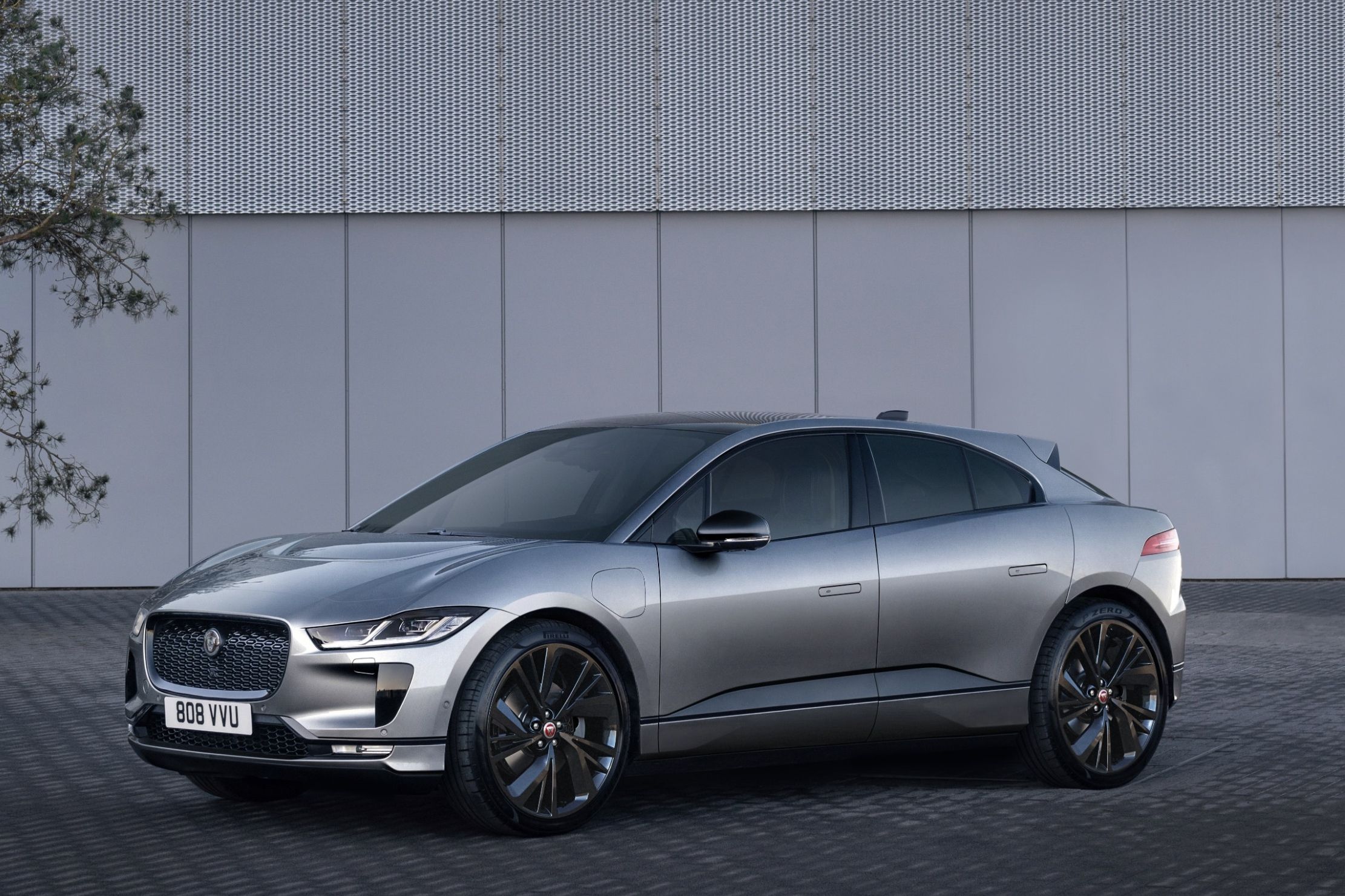
While Jaguar was late to the SUV market with the F-Pace arriving decades after market leaders like the Lexus RX and Mercedes-Benz GLE (née ML-Class), it is clearly trying to make up for it. In the coming year, Jaguar is launching two more crossovers to join the F-Pace: the tiny E-Pace (that is about the size of an Audi Q3) and this, the I-Pace, which splits the difference in size, but establishes a whole new branch in the family tree as the first electric vehicle in Jaguar's history.
While at first glance it looks pretty much identical to the concept previewed in 2016, there are some minor tweaks to aid in aerodynamics, tightening up the proportions and real-world practicalities like larger mirrors and higher profile tires. It still retains the spectacular hood scoop and roof spoiler that improve efficiency and grip. Another practical benefit of the EV design is increased interior space, which Jaguar promises will be sufficient for five adults, and the cabin also looks thoroughly modern and high tech with Jaguar-Land Rover's latest dual-screen infotainment system first introduced on the Velar.
The real selling point of this vehicle is going to be its electric powertrain, a 90-kWh lithium-ion battery powering an electric motor on each axle for 395 horsepower and 513 lb-ft of torque. The instantaneous torque, lightweight aluminum construction and compact size mean it can accelerate to 60 mph in 4.5 seconds. And because of the freedom the electric powertrain allowed designers, the floor mounted batteries (which are also structurally supportive) help it achieve 50:50 weight distribution and an incredibly low centre of gravity. These should give it superb dynamics when combined with the double wishbone front and integral link rear axle suspension, and a trick air suspension is optional to further broaden its handling and comfort range.
Jaguar promises 480 km of range based on the new European WLTP cycle, which promises to be far more realistic than the former European NEDC standard, though perhaps is still as much as 20% more optimistic than EPA ratings. Charging was also a key factor in development, and one can achieve an 80% battery charge in just 40 minutes if you can find a charging location with 100-kW DC rapid charging. Typical home charging with a Stage 2 charger can achieve that 80% in just over ten hours.
